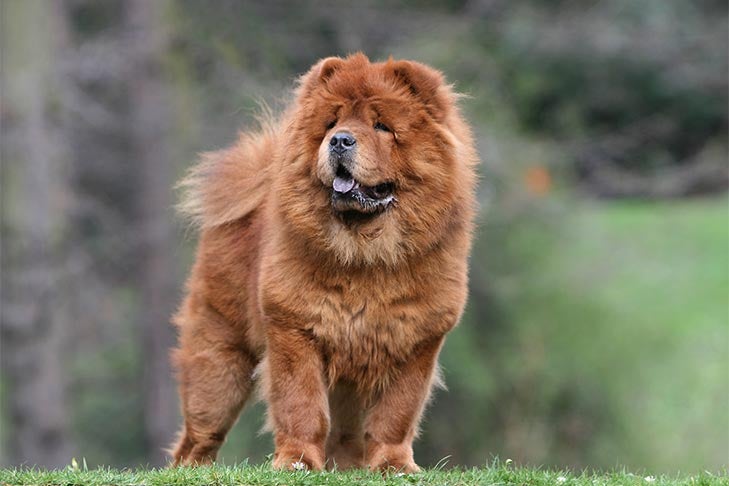Clubs Offering:
Everything about the Chow Chow captures the imagination, from its magnificent, lion-like appearance to its long and storied history, but nothing catches the eye quite like his tongue. The Chow Chow’s blue-black tongue sets it apart from almost every other dog breed. But why do Chows have blue tongues? We reached out to Linda Love Banghart, an officer in the Chow Chow Club, Inc., to find out why Chow Chows have blue tongues, as well as a little more information about this unique dog breed.
What is the normal color of a dog’s tongue?
The normal tongue color of a healthy dog should be deep pink. The younger the dog the pinker their tongues will be. Richness in the pink color will start decreasing as the dog ages, often an indication of decreasing vitality for the dog breeder.
How Did Chows Get Blue Tongues?
Chow Chows, also known as Chows, are one of the world’s oldest dog breeds. They appear in Chinese artifacts from as far back as 206 B.C., and other evidence suggests this breed goes back much further. According to Banghart, there is “no documentation of why Chow Chows have a blue-black tongue” despite this lengthy history, but fictional explanations do exist. Some of these tales include the belief that when the world was created, Chow Chows were allowed to lick up all the little pieces of blue sky that fell on the earth when the stars were set in their places, or they inherited their tongues from a bear. While the Chow Chow’s appearance is certainly bearish, the real reason for the distinctive tongue remains unknown.
What we do know is that Chows had their blue tongues in the 1820s when they were exhibited at the London Zoo as “the wild dogs of China.” Caretakers noticed the blue-black coloring of their mouths and tongue, and “as managed breeding began,” Banghart says, “this unique characteristic was used as a requirement for identifying purebred offspring.”
This requirement continues today. The breed standard states:
Mouth and Tongue – Edges of the lips black, tissues of the mouth mostly black, gums preferably black. A solid black mouth is ideal. The top surface and edges of the tongue a solid blue-black, the darker the better. Disqualifying Fault – The top surface or edges of the tongue red or pink or with one or more spots of red or pink.
